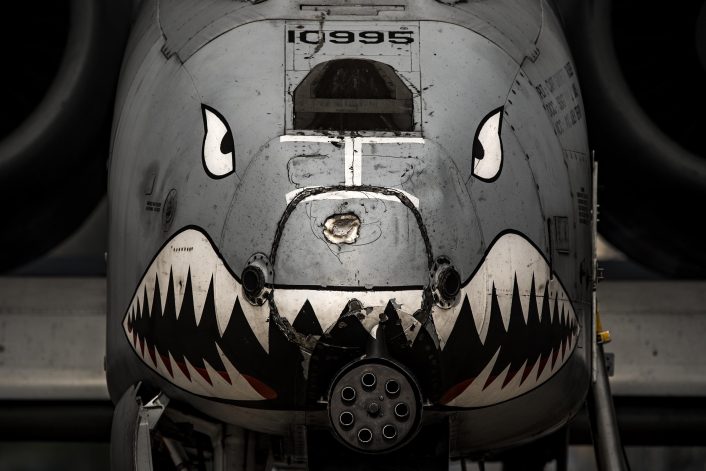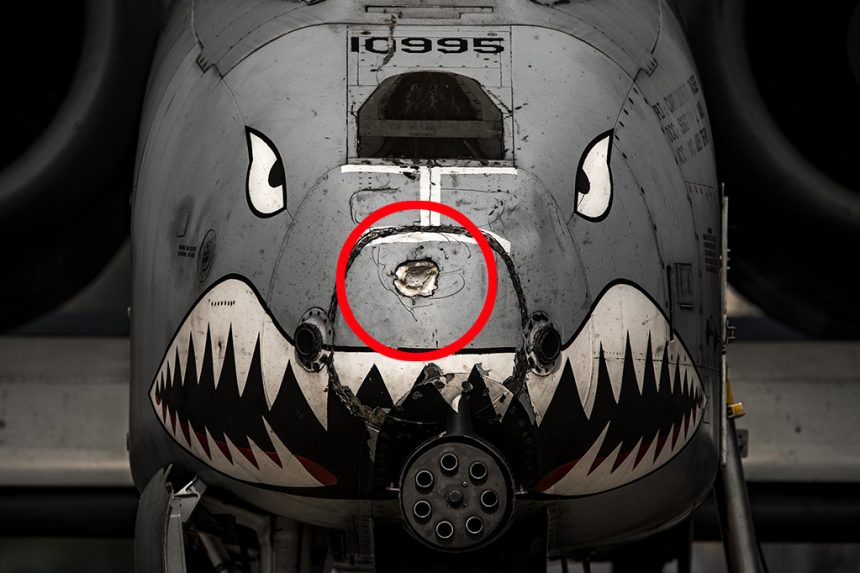No, that’s not a bullet hole.
Taken at Moody Air Force Base, Georgia, by U.S. Air Force’s Staff Sgt. Ryan Callaghan, this photo features the A-10C Thunderbolt II aircraft 81-0995 from the 75th Fighter Squadron taxiing down the runway prior to take off on Apr. 28, 2017, during Exercise Combat Hammer, an air-to-ground exercise hosted at Hill Air Force Base, Utah, designed to collect and analyze data on the performance of precision weapons and measure their suitability for use in combat.
The image is particularly interesting as it shows what looks like a large hole in the nose of the Warthog (as the A-10 is nicknamed in the pilots community). However, that is not a bullet hole but the damage caused by a tanker’s boom during AAR (Air to Air Refueling) operations.
Most of the A-10s have their noses more or less damaged by the flying boom that is inserted by the tanker’s “boomer” into the Warthog’s receptacle, in the nose of the aircraft in front of the cockpit. Usually, such dents don’t affect the aircraft’s ability to fly hence they are left there until the next major maintenance work.
By the way, a Moody pilot confirmed us that the one in the photo is a nose significantly damaged by a KC-135’s boom.
Click below for the full resolution version of the photo.










